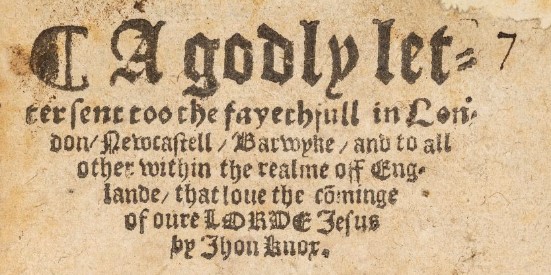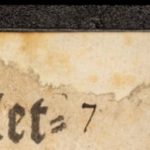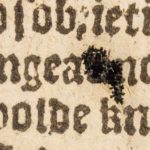John Knox and ‘A godly letter’: An Attack on Marian Catholicism
We are delighted that students on Dr Amy Blakeway’s ‘Mary Queen of Scots, France, England and Ireland’ module (MO4807) last year were again asked to submit a blog post as part of their course. Here is the next in a small series of blogs which reflect on the rare books with which the students engaged during their remote studies last year.
Standing amongst iconic titles such as The First Blast of the Trumpet and The History of the Reformation, John Knox’s 1554 A godly letter tends to be overlooked. However, those who do are missing out on a glimpse of a more hidden, English-focused side of John Knox, as well as a unique view into illegal Protestant printing during the reign of Mary Tudor.


Knox wrote A godly letter in Geneva during his exile on the Continent, having fled England because of Mary Tudor’s coronation in 1553. The ascension of the Catholic Mary Tudor was unfortunate for Knox, as he had left Scotland for England in 1549 to escape Catholic persecution. During his time in England, Knox spent about four years preaching and ministering to a congregation as part of the Edwardian Church. Therefore, it came as a devastating personal blow when he learned in Geneva that many of those in his former congregations in London, Newcastle, and Berwick had started attending Mass. In response, Knox crafted A godly letter to warn both his congregation and all the Protestants in England against tolerating Catholicism. He reminded them about the covenant obligation and the corporate responsibility for sin. By abiding and not actively protesting against such behaviour, the whole nation was incurring corporate guilt and eternal damnation.

The University of St Andrews Library’s Special Collections has a second edition copy of A godly letter sent too the fayethfull in London, Newcastell/ Barwyke/ and to all other within the realme off Englande/ that loue the co[m]minge of oure Lorde Iesus / by Ihon Knox. (Hay BX9223. L5B54 (SR)), which was published in 1554. Overall, the book is in good condition aside from the usual wear and tear – expected of any book which has survived over four hundred years! While it was rebound in the nineteenth century, the original pages remain with minimal signs of damage. The only notable blemishes are a few marks on two of the leaves and a torn corner on the title page which has since been repaired. These marks are exciting finds for a historian, as they give valuable insight into how books were used in the past. For instance, the dark ink marks indicate that this book was near ink after it was published, suggesting that at least one person was using it to take notes!

However, one of the fascinating aspects of this copy is not Knox’s writing but its imprint. A handwritten note by David Hay Fleming, who acquired this copy and whose collection is held by the University, on the title page indicates that the claim that it was published in Rome is false. Instead, it is thought this book was printed in Wesel, Germany. During Mary’s reign it became illegal to print Protestant material and all the Protestant printers in England were shut down. In response, Protestants who had fled to the Continent began to publish and import texts to England. However, in a quiet act of revenge, many of them began to falsely claim that these clear pieces of Protestant propaganda were printed in Rome; an act which simultaneously protected their identities and mocked the Catholic authorities. The claim that this edition was ‘[i]mprinted in Rome, before the Castell of S. Aungel [Castel Sant’Angelo],’ the papal fortress in Rome, ‘at the signe of Saint Peter’ deliberately mocked the papacy by flaunting the idea that this was printed under its nose!

Thus, this edition of A godly letter is an excellent demonstration of how Protestants, from John Knox to everyday Protestant printers, protested against Mary Tudor’s Catholic rule. From publishing texts which called for outright resistance, to using seemingly innocuous details to taunt the authorities, those involved in the Protestant book trade utilized every avenue to remind the English public that they were still a force to be reckoned with.
Indigo Fulham-Fitzgerald
2020/2021
Bibliography
Primary
Knox, John, A godly letter sent too the fayethfull in London, Newcastell/ Barwyke/ and to all other within the realme off Englande (1554). University of St. Andrews Library‘s Special Collections Hay BX9223.L5B54 (SR).
Secondary
Dawson, Jane, John Knox (London, 2016).
Kellar, Clare, Scotland, England, and the Reformation, 1534-61 (Oxford, 2003).
King, John, ‘The Book-Trade Under Edward VI and Mary I’, Lotte Hellinga and J. B Trapp (eds), The Cambridge History of the Book in Britain, Volume III 1400-1557 (Cambridge, 1999), pp. 164-178.
Kyle, Richard G., ‘The Church-State Patterns in the Thought of John Knox’, Journal of Church and State, 30:1 (1988), pp. 71-87.